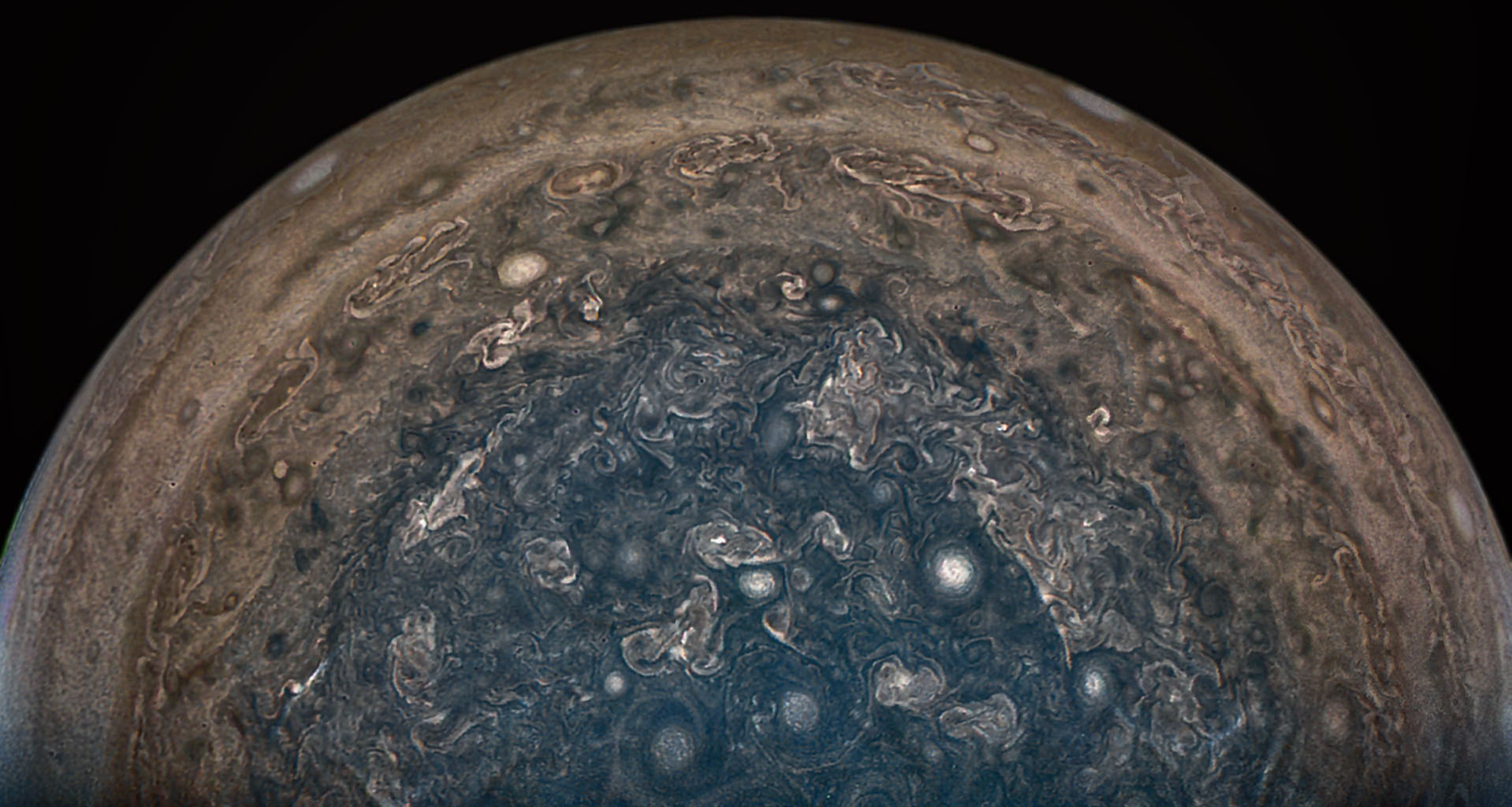
NASA’s Juno spacecraft has been orbiting the gas giant planet Jupiter since July 4, 2016, and has already greatly increased scientists’ understanding of this fascinating world, the “King of Planets.” For the past while now, Juno has been in an elongated 56-day orbit, which brings the spacecraft close in over the cloud tops before swinging out farther away from the planet again. The plan had been for Juno to then switch to a closer, 14-day orbit, but due to growing concerns over another engine burn possibly resulting in a less-than-desirable new orbit, that plan has now been scrapped. Juno will now remain in its current orbit for the remainder of the mission.
The spacecraft itself currently remains in excellent condition and will be able to continue with its scientific observations of Jupiter. While not as optimal according to initial mission designs, this orbit will still allow Juno to maximize its scientific studies of Jupiter, as well as help protect the spacecraft from the harsh radiation around Jupiter.
“Juno is healthy, its science instruments are fully operational, and the data and images we’ve received are nothing short of amazing,” said Thomas Zurbuchen, associate administrator for NASA’s Science Mission Directorate in Washington. “The decision to forego the burn is the right thing to do – preserving a valuable asset so that Juno can continue its exciting journey of discovery.”
The decision to keep the orbit the same actually doesn’t negatively affect the amount of science that can be done too much; in some ways it will actually help it. When Juno is farther out in each orbit, it will be able to better examine the region of space that is dominated by Jupiter’s powerful magnetic field. This includes the far magnetotail, the southern magnetosphere, and the magnetospheric boundary region called the magnetopause. Scientists want to study how the magnetospheres interact with the solar wind coming from the Sun. Being farther out during part of each orbit is also beneficial to the health of the spacecraft, since the radiation from Jupiter will be less intense. Also, the altitude of Juno during closest approach on each flyby still remains the same, about 2,600 miles (4,100 kilometers).
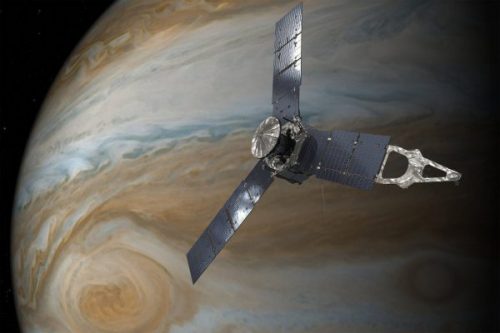
The 14-day orbit would have kept Juno much closer in to Jupiter at all times; while good for science, the spacecraft would also have been exposed to the radiation for much longer periods of time.
“Another key advantage of the longer orbit is that Juno will spend less time within the strong radiation belts on each orbit,” said Scott Bolton, Juno principal investigator from Southwest Research Institute in San Antonio. “This is significant because radiation has been the main life-limiting factor for Juno.”
So just why was the decision made to keep Juno in its current orbit?
The problem began when two helium check valves that are part of the plumbing for the spacecraft’s main engine did not operate they was they should have when the propulsion system was pressurized last October. Telemetry from Juno indicated that it took several minutes for the valves to open, compared to only a few seconds during past main engine firings.
“During a thorough review, we looked at multiple scenarios that would place Juno in a shorter-period orbit, but there was concern that another main engine burn could result in a less-than-desirable orbit,” said Rick Nybakken, Juno project manager at NASA’s Jet Propulsion Laboratory in Pasadena, California. “The bottom line is a burn represented a risk to completion of Juno’s science objectives.”
So far, Juno has orbited Jupiter four times; the most recent orbit was just completed on Feb. 2, and the next close flyby will be on March 27. It is during these close flybys that Juno has taken spectacular images of Jupiter’s cloud layers, showing exquisite detail in the many cyclones and other storm systems in the turbulent atmosphere.
Juno has also found that Jupiter’s magnetic fields and aurora are larger and more powerful than previously thought. Also, the distinctive “belts” in the cloud tops are not just a “surface” feature, they actually extend deep down into Jupiter’s atmosphere. It’s worth remembering also that Jupiter doesn’t have a solid surface as such below the clouds, hence why it is called a gas giant. Using its Microwave Radiometer (MWR) instrument and its largest antenna, Juno can “see” about 215 to 250 miles (350 to 400 kilometers) below the top cloud deck.
Even though Juno’s orbit will now remain the same, the mission has still been an overwhelming success so far. Not since the previous Galileo mission has Jupiter been explored this closely. The new insights will help scientists understand how gas giants like Jupiter and Saturn formed and evolved over time. These gaseous worlds dwarf much smaller rocky planets like Earth. They may also provide clues about exoplanets such as “hot Jupiters” which orbit closer to their stars.
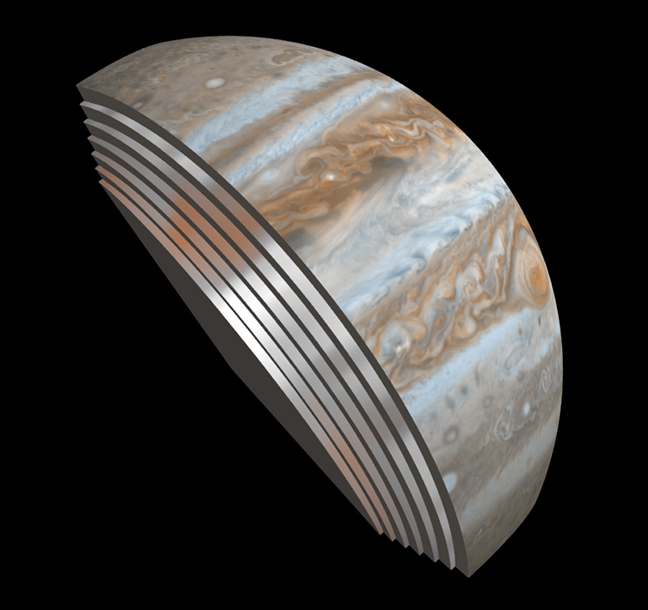
“Juno is providing spectacular results, and we are rewriting our ideas of how giant planets work,” said Bolton. “The science will be just as spectacular as with our original plan.”
Last October, Juno had briefly entered safe mode, a precautionary turning off of all but vital instruments and other components when a software performance monitor induced a reboot of the spacecraft’s onboard computer. The spacecraft recovered after only a few days however, and continued with its science mission.
“Juno exited safe mode as expected, is healthy and is responding to all our commands,” said Nybakken. “We anticipate we will be turning on the instruments in early November to get ready for our December flyby.”
Since Juno flies directly over Jupiter’s poles, it has provided the best-ever views of these regions on the planet.
“First glimpse of Jupiter’s north pole, and it looks like nothing we have seen or imagined before,” said Bolton. “It’s bluer in color up there than other parts of the planet, and there are a lot of storms. There is no sign of the latitudinal bands or zone and belts that we are used to – this image is hardly recognizable as Jupiter. We’re seeing signs that the clouds have shadows, possibly indicating that the clouds are at a higher altitude than other features.”
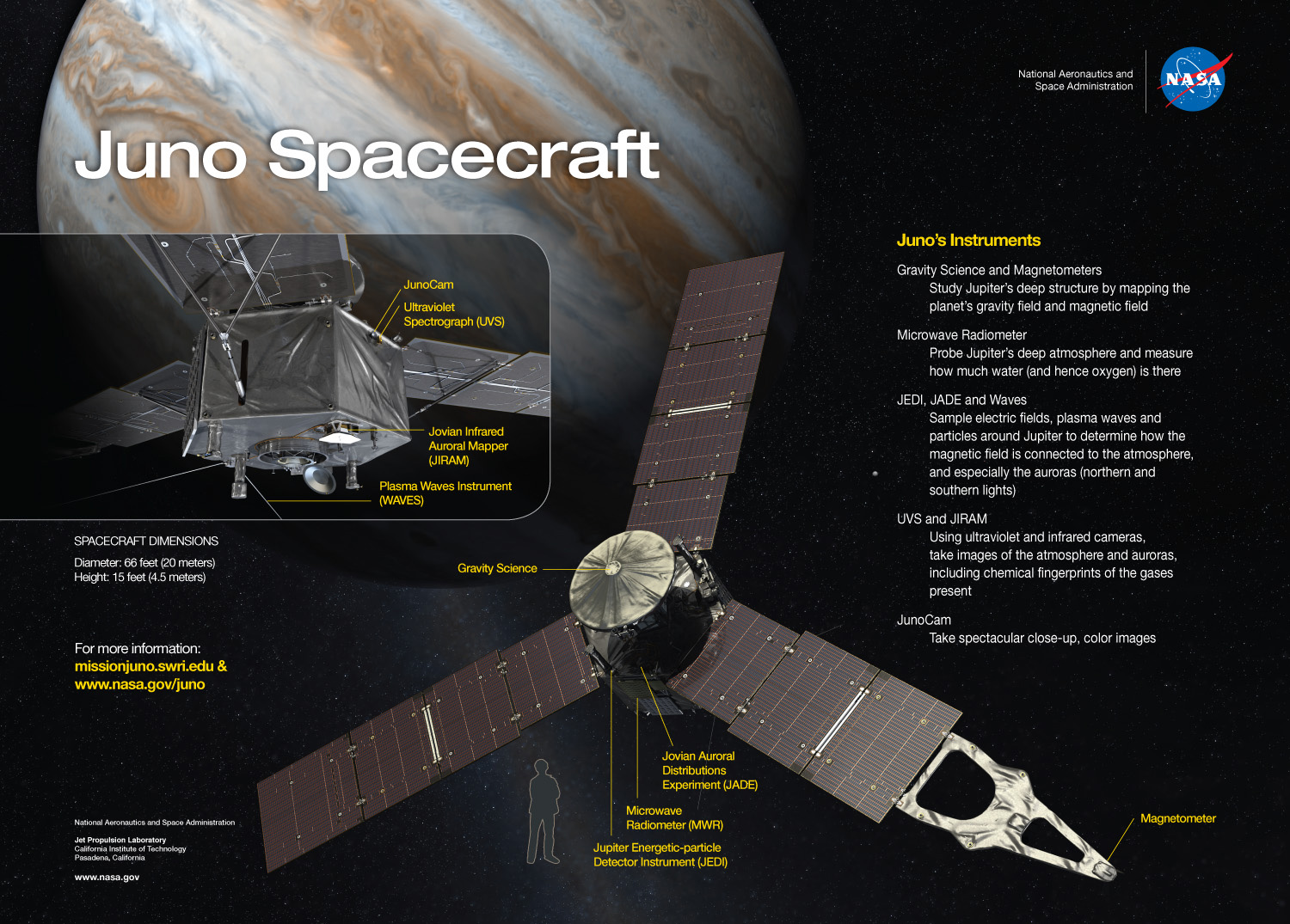
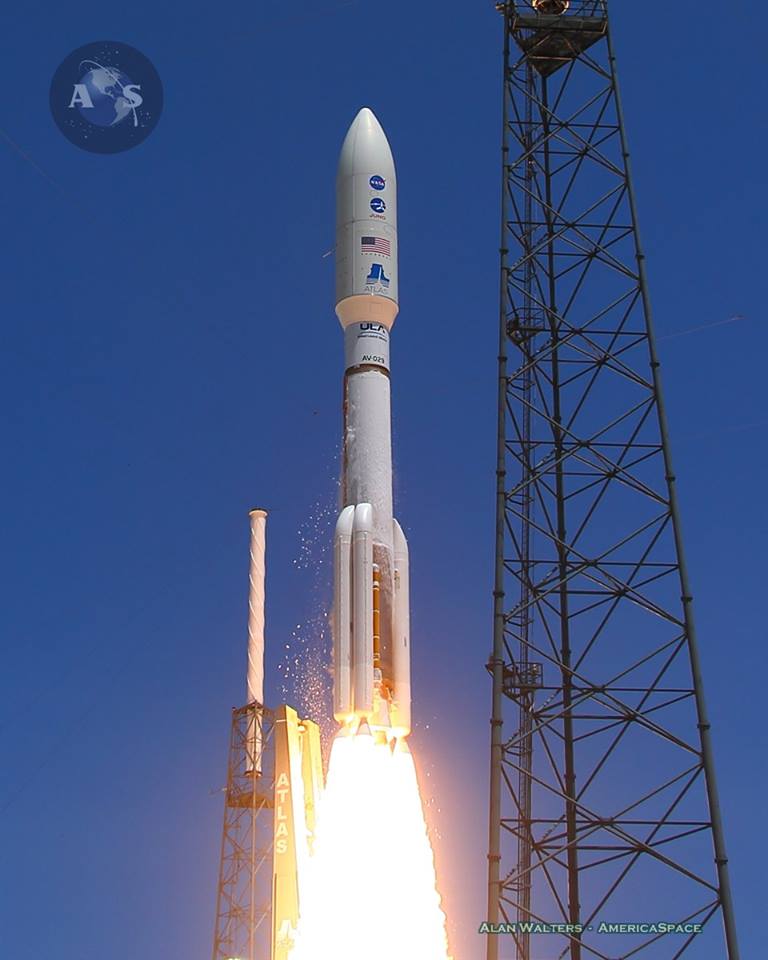
“Saturn has a hexagon at the north pole,” added Bolton. “There is nothing on Jupiter that anywhere near resembles that. The largest planet in our Solar System is truly unique. We have 36 more flybys to study just how unique it really is.”
Juno first arrived at Jupiter on July 4, 2016, and will conduct a planned series of 37 close flybys of the planet. The main objectives of the mission include investigating the existence of a possible ice-rock core, determining the amount of global water and ammonia present in the atmosphere, studying convection and deep wind profiles in the atmosphere, investigating the origin of the Jovian magnetic field, and exploring the polar magnetosphere.
Juno is also the first solar-powered spacecraft to fly as far as the outer Solar System, where sunlight is much weaker. It first broke the distance record on Jan. 13, 2016, and is also the first spacecraft ever to fly with 3-D printed titanium components.
Juno has already returned an incredible amount of science data from Jupiter,and that will continue even in the “new” orbit. We can look forward to more new findings, and more breathtaking images from this mysterious world.
More information about the Juno mission is available on its NASA website.
Be sure to “LIKE” AmericaSpace on Facebook and follow us on Instagram & Twitter!






The picture of Jupiter’s south pole is stunning!